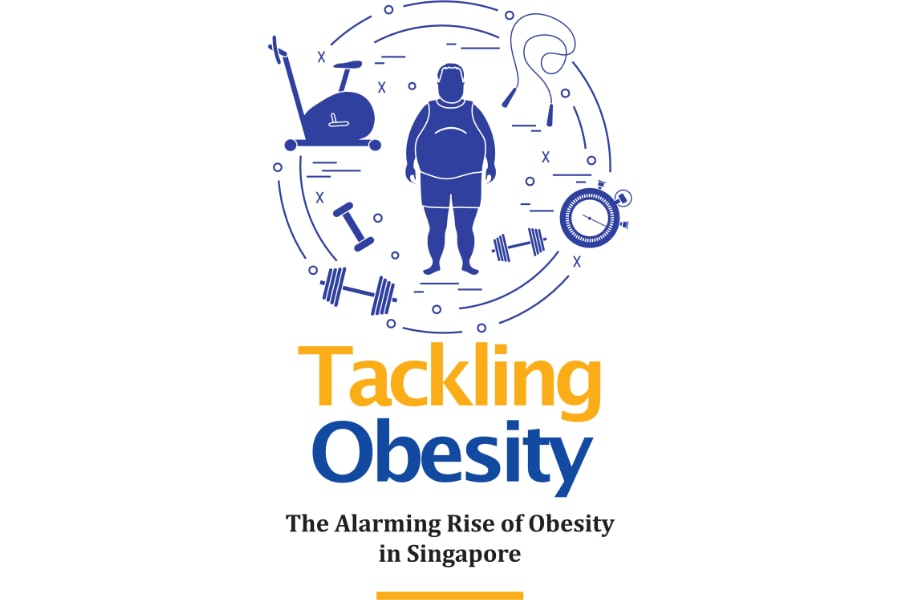
Prime Magazine February/March Issue
Recent statistics from the National Population Health Survey 2022 have revealed a concerning trend: 28.6% of adult Singaporeans were overweight, with an additional 11.6% being obese. The prevalence of obesity has risen from 8.6% in 2017 to 11.6% in 2022.
Overweight (body mass index (BMI) 25.0-29.9 kg/m2) and obesity (BMI 30.0 kg/m2 and above) are defined by the World Health Organisation as excessive body fat accumulation that has a negative impact on health, increasing the risk of developing chronic diseases such as cardiovascular diseases, type 2 diabetes mellitus and certain cancers. As Asians, the risk of chronic diseases starts at a lower BMI. For instance, a BMI 23.0-27.4 kg/m2 is considered moderate risk and a BMI of 27.5kg/m2 and above is considered high risk.
Factors Behind Obesity
While obesity is a complex multifactorial disease influenced by genetics and environment, the root cause of obesity is an imbalance of calorie intake and expenditure. In Singapore, factors such as busy lifestyles, overeating and a lack of exercise contribute significantly to the rising obesity rate. Exercise and nutrition are key lifestyle interventions for preventing and reversing the rising prevalence of obesity, and they must work in tandem.
Dietary Strategies
Dietary strategies play a crucial role in weight loss efforts. To maintain weight, the amount of energy you receive from food and drinks must balance the amount of energy your body expends through physical activity. Weight loss can occur when you consume lesser energy than you use. Here are some effective dietary measures for weight loss.
Smaller Portion
Research suggests people tend to consume more food when offered larger portions. Choose smaller plates to reduce food portions to prevent overeating. Follow the Health Promotion Board’s “My Healthy Plate”, which emphasises filling a quarter of your plate with whole grains, another quarter with good sources of protein, and the remaining half with fruits and vegetables.
Limit Fat Intake
A gram of fat has nine calories, whereas a gram of carbohydrate or protein contains four. You can reduce your fat intake by trimming the skin and fats of meat products and using healthier cooking methods such as baking, steaming or air frying, instead of deep frying. When eating out, substitute flavoured rice like chicken rice, nasi lemak and coconut-based curries with unflavoured rice and clear soup noodles. Additionally, choose lean meat/poultry, eggs, tofu and legumes to further reduce your saturated fat intake
Reduce Sugar Intake
Refined sugars contain minimal nutritional value, and excessive intake of these empty calories can lead to weight gain. Make water your primary beverage of choice or pick a healthier option with no/less added sugar.
Increase Fibre Intake
Wholegrain alternatives like wholemeal bread or brown rice help you to increase your fibre intake. Fibre encourages the feeling of fullness for extended periods, which reduces the urge to overeat and aids weight management. Aim for two servings of fruits daily and consider replacing calorie rich snacks like potato chips, cakes and pastries with fruits. Consuming whole grains with adequate intake of fruits and vegetables as part of your diet plan can also help to lower the risk of developing chronic diseases.
Moderate Alcohol Intake
Alcohol, like fat, is calorically rich (seven calories per gram). Mixed drinks can contain as many calories as a meal, but without the nutrients. If you are taking alcohol, try to limit yourself to two servings (for males) or one serving (for females) per day, with two alcohol-free days per week.
Practice Mindful Eating
Chew your food thoroughly and slow your pace of eating to allow your body to experience fullness. This may help to prevent overeating. Distractions during mealtimes, such as watching TV or mobile phone usage, should be avoided as they may encourage mindless eating. If food is a source of comfort, be mindful of triggers that may cause you to eat emotionally. Think about your weight loss goals and stick to regular mealtimes to prevent overeating.
Exercise
Exercise plays an equally crucial role in the fight against obesity. In particular, aerobic exercise has been shown to help reduce body fat and improve cardiorespiratory fitness. Aerobic exercise is any activity that uses large muscle groups, is performed continuously and is rhythmic in nature. Examples include brisk walking, cycling and swimming. For body fat loss, it is recommended to engage in at least 250-300 minutes of aerobic exercise per week spread over 4-5 days, with each session lasting at least 30 minutes. Aerobic exercise should be performed at moderate intensity, where mild breathlessness is to be expected. Practise the talk test: when exercising at moderate intensity, you should be able to talk but not sing.
In addition, strengthening exercises should be included to build skeletal muscle mass and strength. These can help you to conduct daily activities more effortlessly and improve your quality of life. Increased skeletal muscle mass and strength also help to protect joints from injury and reduce the risk of falls. Finding the appropriate resistance is essential in strengthening exercises. Appropriate resistance should allow you to complete about 10 repetitions of exercise to fatigue. Perform three sets of 10 repetitions, 2-3 days per week. Examples of strengthening exercises include squats, lunges, wall push-ups and overhead shoulder presses.
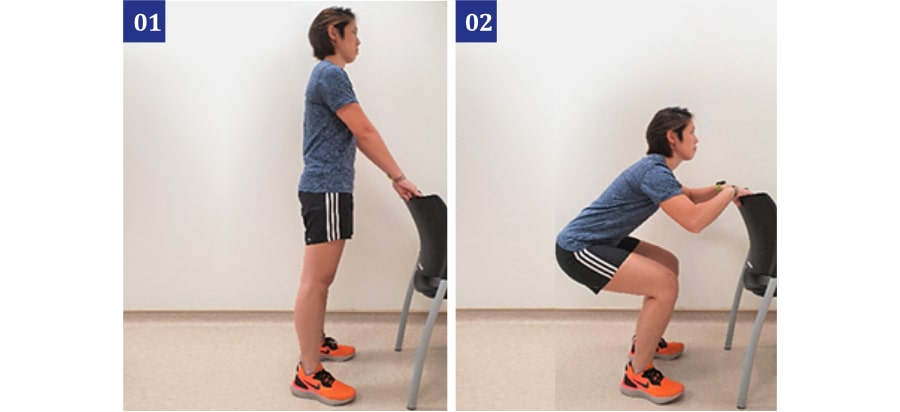 Squats
Squats
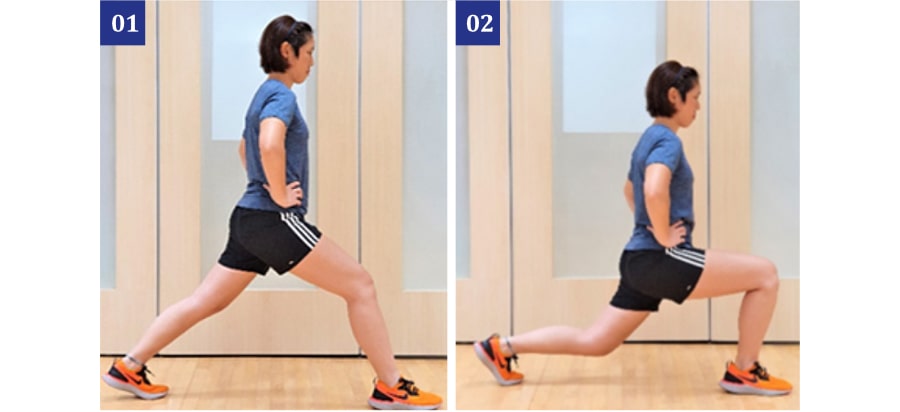 Lunges
Lunges
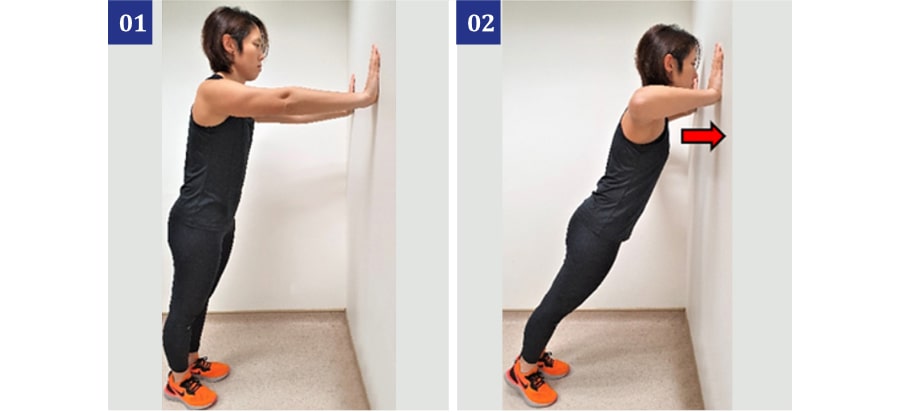 Wall push-ups
Wall push-ups
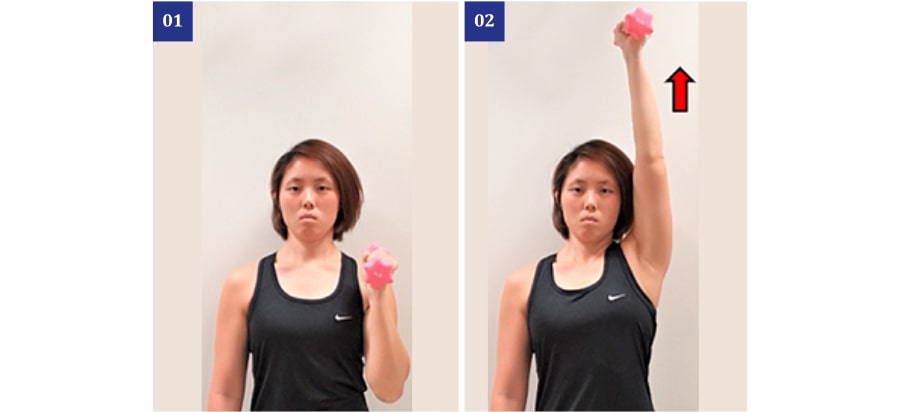 Overhead shoulder presses
Overhead shoulder presses
A common phenomenon seen during weight loss journeys is the loss of both body fat and skeletal muscle mass. If an excessive amount of skeletal muscle mass is lost, sarcopenic obesity may result. Sarcopenic obesity (also known as “Fat Frail”) is characterised by high body fat percentage and low skeletal muscle mass. It contributes to loss of function, increased mortality and reduced quality of life, and is associated with poorer health outcomes compared to obesity alone. Engaging in the right dosage of strengthening exercises can combat this phenomenon.
Active Lifestyle Choices
Incorporating exercise into your lifestyle can be daunting if you have a sedentary lifestyle. Start by slowly increasing your physical activity levels. This can be achieved by walking rather than driving, standing instead of sitting on public transport, and taking regular standing breaks at work for deskbound jobs. Try to clock at least 10,000 steps daily. Once these practices become more routine, exercise can be gradually incorporated into your routine. If you find it challenging to exercise due to joint pain, seated exercises such as cycling, seated marching and seated heel raises can be performed instead.
Mr Bryan Lee is a Dietitian from the Nutrition and Dietetics Department at Tan Tock Seng Hospital. He works with a variety of patients and their families to achieve their nutritional goals. Mr Lee has a keen interest in chronic disease management and health promotion.
Ms Jolyn Ee is a senior physiotherapist at Tan Tock Seng Hospital. She has experience working with patients with chronic metabolic and cardiopulmonary conditions such as obesity, diabetes and chronic lung diseases.